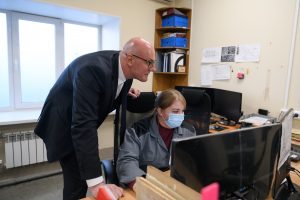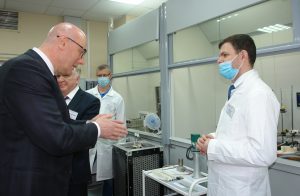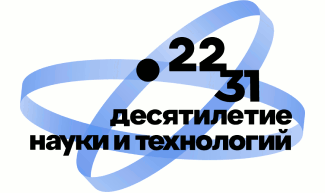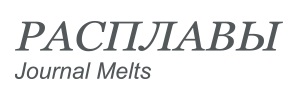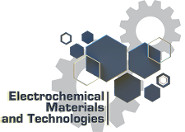On the 16th April, Dmitry Chernyshenko, Deputy Prime Minister of the Russian Federation , Valery Falkov, Minister of Science and Higher Education of the Russian Federation, Vladimir Yakushev, Plenipotentiary Representative of the President in the Ural Federal District and Evgeniy Kuyvashev, Governor of the Sverdlovsk Region visited the youth laboratories of the Institute of High Temperature Electrochemistry of the Ural Branch of the Russian Academy of Sciences, which employ about 40 young scientists in between the ages of 20 and 35. Young scientists told about their developments.
The head of electrocrystallization and high-temperature galvanotechnics lab, PhD, Andrey Isakov presented a technology of producing new material for the combustion chambers and catalysts of the small spacecraft engines running on green fuel, which has been implemented at Kompozit enterprise, JSC (the leading materials science enterprise of Roskosmos State Corporation in Korolev).
The head of the pyrochemical processes and electrochemical technologies lab, PhD, Alexander Dedyukhin explained the creation of a pyrochemical technology for reprocessing the spent nuclear fuel within the framework of the large-scale project of Rosatom (“Breakthrough”), which is a part of the 14th national project for the development of nuclear science and technology (“Development of technology, scientific research in the field of atomic energy use in the Russian Federation for the period up to 2024”). The student Albert Mullabaev (PhD) showed the guests an experimental setup for studying the behavior of simulators of the SNF fission products during pyrochemical reprocessing. According to his words, interesting scientific problems that are solved in the youth laboratories contribute the creative growth of novice researchers.
Dmitry Medvedev, DSc in chemistry, Leading Researcher at the InEnergy lab, also presented innovative developments – solid oxide fuel cells and electrolyzers, and devices in order to utilize carbon emissions and reducing the carbon footprint. An electrochemical oxygen “pump” has also been created here, which, in particular, can be used for the treatment and rehabilitation of patients with COVID-19 and the training of athletes.
“We have unique developments, and young people interested in scientific research come to work with us. This is provided by the existing support measures. But we also need sites jointly with business in order to develop technologies and new modern equipment,” – noted Yuri Zaikov, scientific director of the Institute of High Temperature Electrochemistry, Ural Branch of the Russian Academy of Sciences.
At the meeting with young scientists at the Ural Branch of the Russian Academy of Sciences, which Andrey Isakov and Dmitry Medvedev attended as the IHTE representatives, the Deputy Prime Minister Dmitry Chernyshenko noted that during the Year of Science and Technology within the framework of the Science and Universities national project, a whole range of measures to support young scientists is envisaged. These are grants, housing certificates, the creation of laboratories and the renewal of scientific equipment. Dmitry Chernyshenko instructed the Ministry of Education and Science in order to create a navigator on the ministry’s portal informing about programs to support scientists.
The visit of the Deputy Prime Minister of the Russian Federation Dmitry Chernyshenko, Minister of Science and Higher Education of the Russian Federation Valery Falkov, Plenipotentiary Representative of the President in the Ural Federal District Vladimir Yakushev and Governor of the Sverdlovsk Region Yevgeny Kuyvashev at the IHTE was reported on the news channels Vesti Ural and Channel 4:

